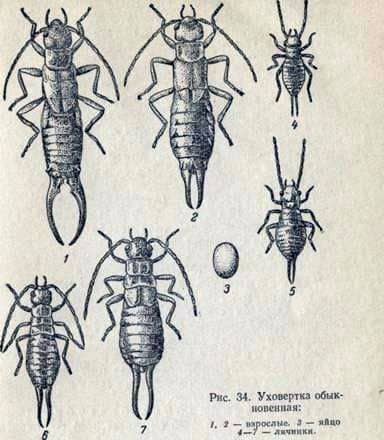Earwig

The earwig (Forficula auricularia L.) is from the order of the skin-winged, has an elongated body; On the head are big eyes, mouth organs gnawing and directed forward. Antennae long, filiform, with clearly defined segments. Fore wings are hard, short, without venation. The abdomen at the end has “tongs” consisting of two solid hooks.

The earwig is a gnawing vegetable and fruit pest. She gnaws flowers, leaves, half-ripe seeds, fruits, etc. Having climbed up the legs in the hive, the earwig lives in moist and warming material or interstitial hive space, feeds on bees, catching and destroying them. When disassembling the hive, it, being light-haired, hides in the warming material and cracks of the hive.
Prevention and control measures. Keep the hives on dry, grass-free places. The heating material must be dry. With a strong attack of earwigs, the hive and the warming material should be replaced. The legs of the hive are smeared with autogrids, as indicated in the fight against ants. Pillows and warming material is dried in the sun.
Earwig
